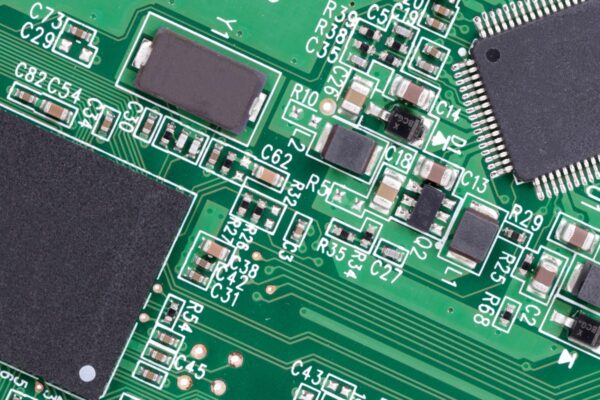What is Via Filling
Via filling is the process of filling the copper-plated holes, known as vias, on a printed circuit board (PCB) with either conductive or non-conductive material. This process serves several purposes to enhance the overall performance and reliability of the PCB. The primary objective of via filling is to prevent the entry of impurities into the vias, reducing the risk of contamination or corrosion and maintaining the integrity of the PCB. Additionally, filling the vias improves their mechanical strength, making them more resistant to stress and mechanical loads, which is particularly important in applications where the PCB may undergo vibrations or mechanical shocks.
Via filling also enables the placement of surface mount technology (SMT) components on top of the filled vias, increasing the available space for component placement and enhancing design flexibility. It strengthens the attachment of pads to the PCB, reducing the risk of detachment, especially in applications subjected to high temperatures or thermal cycling.
Furthermore, via filling helps to minimize the risk of solder wicking, which occurs when solder flows up the via during the soldering process, leading to poor solder joints and potential electrical issues. By blocking the flow of solder into the via, via filling ensures reliable solder joints.
Via filling also prevents the trimming of silkscreen printing, which is used to apply labels, markings, or component identifiers on the PCB surface. Filling the vias ensures that the markings remain intact and legible.
When the vias are filled with conductive material, such as copper, it enhances the thermal conductivity and current carrying capacity of the via. This is particularly beneficial in applications where heat dissipation or high current flow is a concern.
Frequently Asked Questions
What Are the 3 Types of Holes
In engineering, there are three types of holes: blind holes (on the left), through holes (in the middle), and interrupted holes (on the right).
What Are the Two Types of Vias
There are two main types of vias, which are determined by their location within the PCB layers. These types are known as blind holes and buried holes. A blind hole is a via that extends through either the top or bottom layer of the board, but does not reach any of the internal layers.
Do Vias Connect All Layers
The main distinction between a via and a pad lies in the fact that while a via can connect all layers of the board, it also has the capability to extend from a surface layer to an internal layer or between two internal layers.
What Is the Distance Between Vias
Spacing the ground vias at 1/8th of a wavelength provides satisfactory isolation in this case. However, for achieving the highest level of isolation possible (i.e., exceeding the 120 dB limit measurable by a modern network analyzer), it has been determined that the via spacing should be maintained at 1/20th of a wavelength or smaller.
What Is the Difference Between Blind and Stacked Vias
Blind vias are vias that begin on an outer layer but terminate on an inner layer. On the other hand, stacked vias are infused with electroplated copper to interconnect high density layers. Buried vias, however, exist between inner layers and do not begin or end on an outer layer.
Do Vias Increase the Cost of a PCB
The PCB surface finish is responsible for safeguarding the exposed copper area from oxidation and ensuring the solderability of components during the PCB assembly process. To minimize the cost of your PCB, it is advisable to refrain from using filled vias. Filling vias with resin or solder mask during the manufacturing process increases the overall cost.
Why Fill Vias With Epoxy
Conductive epoxy is commonly utilized to fill thermal vias and for legacy products. It has been observed that thermal vias, which are employed to dissipate heat from a component, can experience slight improvements in thermal energy transmission when filled with a conductive material.
Can You Have Too Many Vias on a PCB
Like you mentioned, increasing the number of vias on a PCB will result in a reduction in trace width due to the presence of holes. However, unless you opt for the costly method of plugging and capping the vias, the additional copper within the PCB cannot offset this effect.
What Material Is Used for Vias
A via, which is an electrical connection between copper layers in a printed circuit board, is made by drilling a small hole through two or more adjacent layers. This hole is then plated with copper, forming an electrical connection through the insulation that separates the copper layers.
Should Vias Be Avoided on PCB
Via-in-pads can present challenges during PCB fabrication, specifically with the soldering process potentially obstructing the hole and making it unusable. Therefore, it is generally recommended to minimize the usage of via-in-pads.
Are All Holes in PCB Called Vias
There are various types of holes that are drilled into PCBs, including through holes, blind vias, buried vias, and microvias. Through holes are drilled holes that go through all the layers of the PCB, including the conductive and dielectric layers, from one side to the other.





